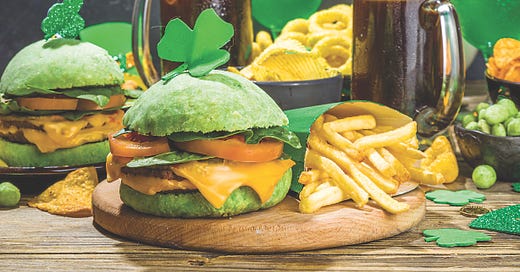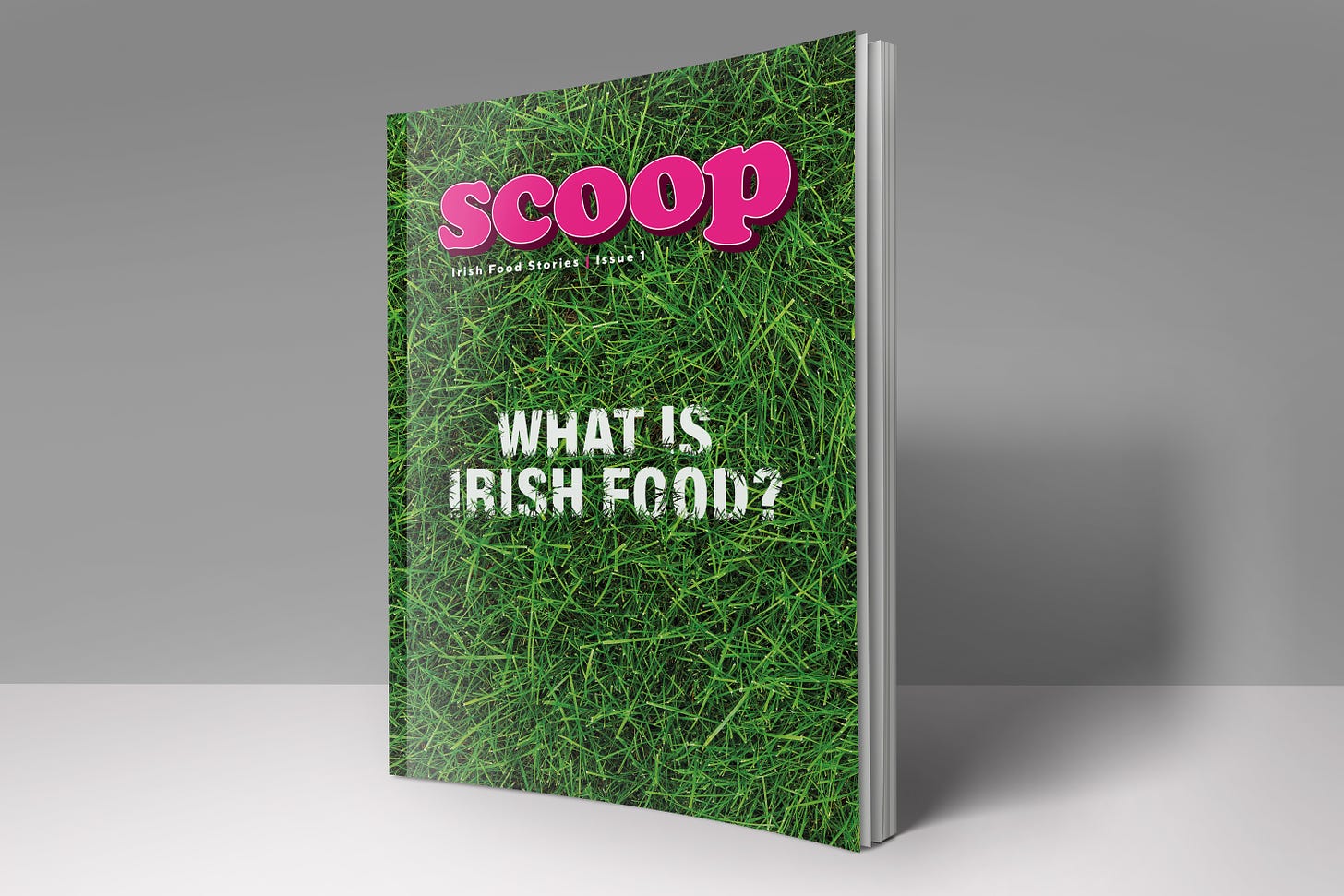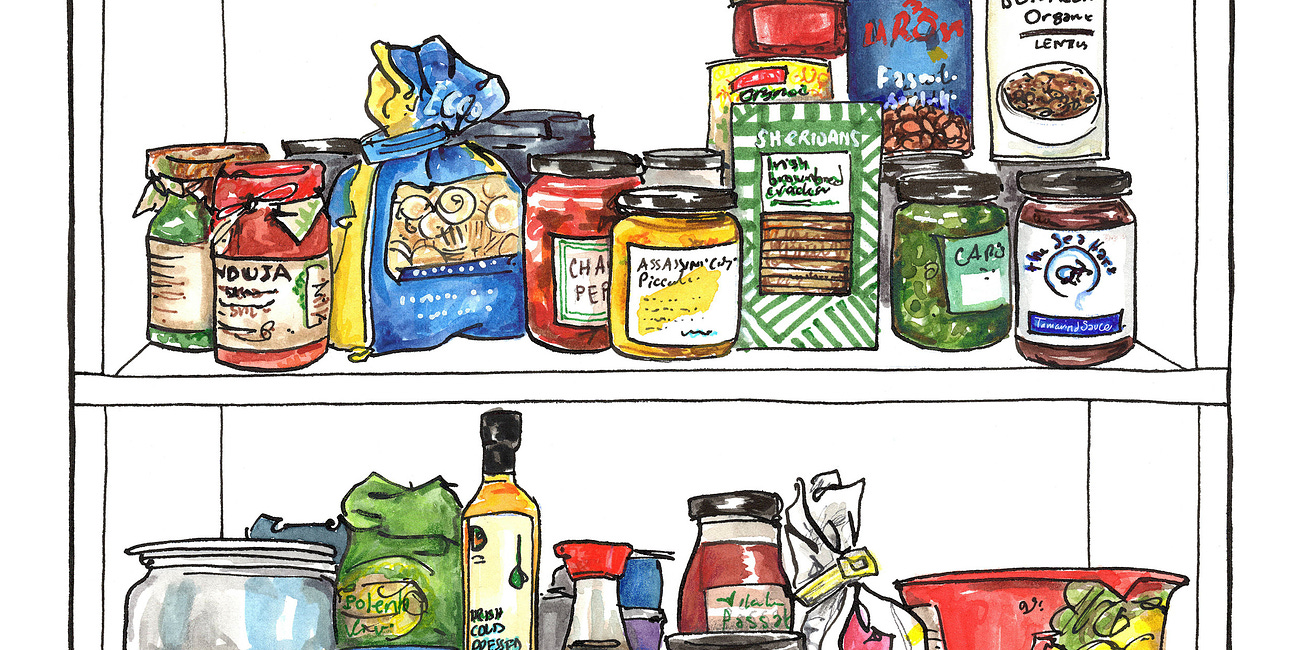It starts every year around the end of February or the beginning of March. The same tired old recipes get dragged out again in the international food media for St Patrick’s Day.
I used to just roll my eyes about it, but the more I think about it, the more I realise all that green beer isn’t just cringingly twee.
Something deeper is going on here.
As an American immigrant living in Ireland since 1999, it frustrates me to see how Irish food is perceived abroad, stuck in a romanticised past or incorrectly portrayed as bland and overboiled. So many of the reference points for Irish food veer from outdated or just plain wrong to downright offensive.
Judging by the recipes you see every St Patrick’s Day, you’d be forgiven for thinking that the only things we eat in Ireland are soda bread, beef stew and colcannon or that we put Guinness or Baileys in everything.
Research by Bord Bia (the Irish Food Board) in 2019 into what Irish households cook and eat revealed that while the classic meat and two veg is the most popular meal, pasta, Italian foods (e.g. pizza, lasagne), a Chinese dish or an Indian dish were four of the top 10.
We’re more likely to be eating spag Bol than beef stew or curry than colcannon.
In the past few years we’ve become more attuned to cultural appropriation and hurtful stereotypes in food, so why do people think it’s okay – or even funny – to keep reverting back to stereotypes about Irish food?
The very concept of ‘ethnic’ food aisles in supermarkets has come under closer scrutiny recently, yet I saw a tweet doing the rounds last year of a photo of potatoes stacked high in the produce section of an American grocery store and someone joking that this was the Irish food aisle.
If other food cultures were treated this way, there would (rightly) be uproar. So how come it’s still happening with Irish food?
To be blunt, rehashing these clichés of Irish food year after year is lazy food writing and it only perpetuates the outdated stereotypes of what Irish food is.
It does not reflect the diverse, modern and vibrant food culture that we have in Ireland and it does a disservice to the story of what our food actually is by preventing the story and perceptions of Irish food from moving forward.
Food writers and editors of the world, please consider this a public service announcement. It’s time to tell a new story.
The worst offenders
Corned beef and cabbage
This is the food that’s most often misrepresented as being a traditional Irish staple, but corned beef and cabbage is to Irish food what spaghetti and meatballs is to Italian food – it’s a dish of the diaspora.
Ireland has a centuries-long tradition of producing corned beef but historically, Irish people couldn’t afford to eat it themselves; it was produced for export to Europe and the Americas.
When Irish people immigrated to the US to escape the Famine, many of them settled near Jewish neighbourhoods. For the first time, they could afford to buy beef – but it was the corned beef from kosher butchers rather than the occasional bit of salted pork or bacon that would have been eaten in Ireland.
Is bacon and cabbage Irish food? Yes. Is corned beef and cabbage? Not so much.
Black and tans, Irish car bombs
A black and tan is made by pouring a pale ale into a pint glass and topping it up with an equal measure of stout to create two distinct black and tan layers, hence the name.
But the Black & Tans were a brutal police force in Ireland in the 1920s that were hated and feared. Think for a minute about what the equivalent of a drink name like this might be in other countries. I’ll let you fill in the blanks here.
The Spruce Eats website has a recipe for the drink but cautions against ordering a black and tan in an Irish pub, warning that ‘the name Black and Tan brings back memories of a tragic time in Ireland’s history and is seen as offensive’.
So why call it that anywhere else either?
Meanwhile, the Irish car bomb – a shot glass of Irish cream topped up with whiskey, then dropped into a half-full pint of Guinness and chugged down before the Irish cream curdles in the stout – has been rebranded as an Irish slammer or a Dublin drop, but for years you could blithely order an Irish car bomb in American bars, oblivious to the all-too-real car bombs of the Troubles.
Not cool, to say the least.
Irish nachos
Back in August, comedian Dara Ó Briain tweeted a photo of Irish nachos on a menu in Toronto: waffle fries topped with pico de gallo, jalapeño aioli, shredded marble cheese and green onions.
‘Thought it would be silly to travel this far and just eat such a traditional dish from home,’ he quipped.
Like green food dye, just because you put potatoes in a dish doesn’t make it Irish either.
Of course, the irony here is that potatoes – the most iconic Irish food – aren’t even native to Ireland. They were brought to Europe by the Spaniards from South America and it’s believed that they made their first appearance in Ireland around 1585, when the British explorer Sir Walter Raleigh planted them at his estate in Youghal, Co. Cork.
Green everything
You can’t just throw some green dye into anything and hey presto, now it’s Irish. Shamrock Shakes and green beer, we’re looking at you.
This piece was originally published in Issue 01 of Scoop: Irish Food Stories. If you want to know more about what Irish food really is, check out Scoop or any of the books I publish at Nine Bean Rows and Blasta Books.
You can also read my companion piece from that issue, ‘What is Irish food?’
What is Irish food?
I’m standing in the Blas na hÉireann (Irish Food Awards) marquee in Dingle, Co. Kerry listening to the 2022 winners of the sourdough bread category being read out.
About me
I’m Kristin Jensen, the founder, publisher and editor at Blasta Books and Nine Bean Rows. Before I started my publishing house, I was a freelance editor and food writer for over 20 years and I’ve co-authored three books. I pretty much eat, sleep and breathe books and food. You can also find me on Instagram @edibleireland.📚









Always good to digest this annual reminder.
Well said. I agree with every point you made.